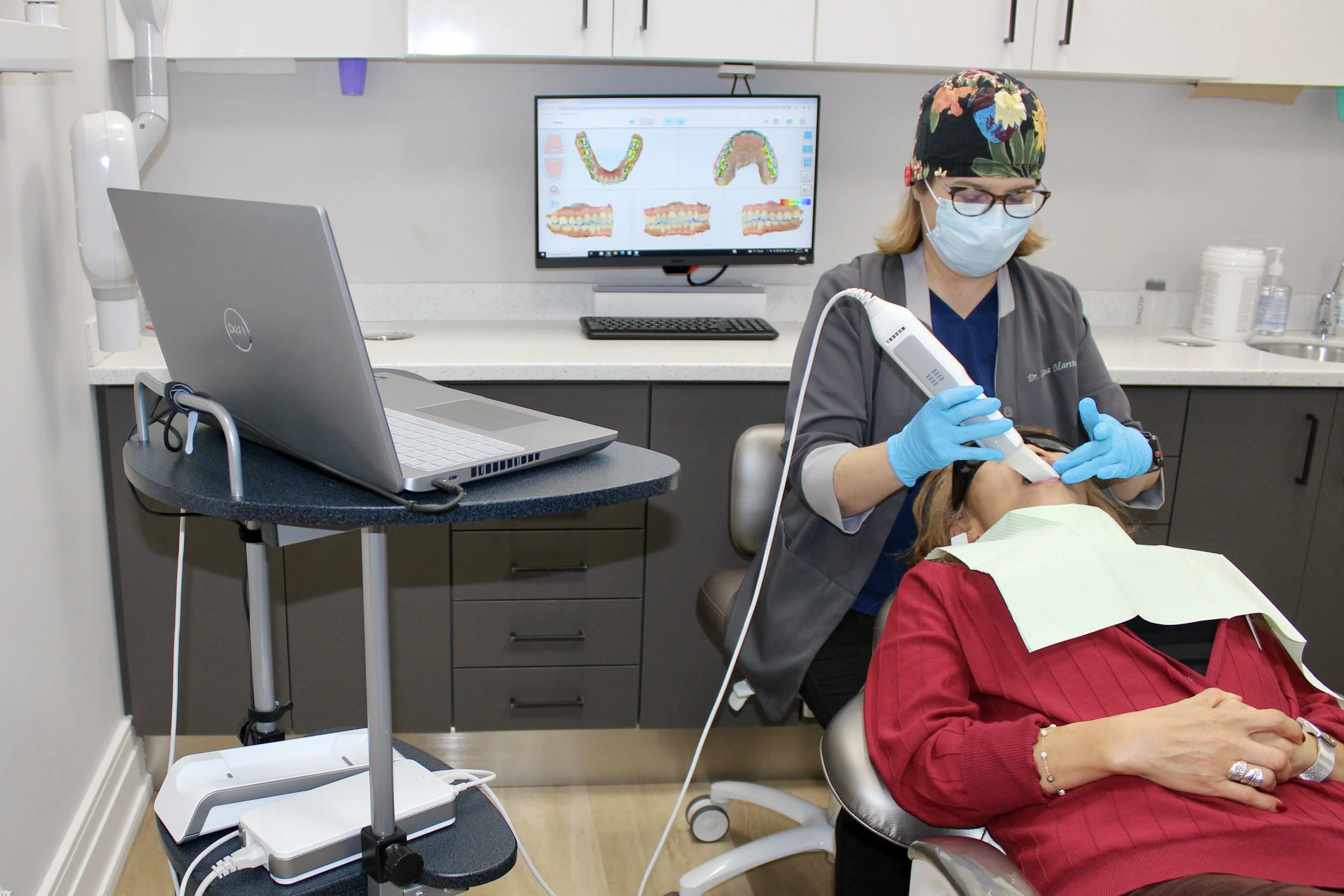The Wonderful World of Digital Dentistry
As the new year begins, we look toward what the future brings. Digital applications in dentistry were introduced approximately 40 years ago, but recently the uses of this technology have grown exponentially. Admittedly, like a lot of dentists, I waited, watched and not without some trepidation, I am now embracing the change.
One of the earliest digital applications adopted by dental offices was the use of digital x-rays and intra-oral cameras. For patients, digital x-ray sensors are bulkier and not as comfortable as the film counterparts, but the reduction in radiation required for digital sensors more than makes up for the very short term discomfort due to their larger shape. Additionally, having the images available instantaneously on the computer screen rather than processing film using harmful chemicals, is both convenient and environmentally friendly. More recently, the increasing use of cone beam computed tomography (CBCT) imaging produces a three-dimensional image of teeth, nerve pathways and bone. This technology is extremely valuable for diagnosis and surgical planning. It can be used in detecting cracks in teeth, pathology, in planning the placement of implants, removing wisdom teeth and in other surgeries using a three-dimensional blueprint.
Above the gum line, in addition to simple pictures taken by an intraoral camera, the use of intraoral scanners has grown due to improvements of the technology and ease of its use. Personally, it has been very satisfying incorporating my digital scanner in my practice to obtain a virtual model of patients’ dentition. This technology uses thousands of overlapped pictures to create a digital 3D model of patients’ teeth. These scans are accurate, less messy and more comfortable for patients. No more gagging on messy impression material! They are used in diagnoses and education, planning cases and taking final impressions for crowns, bridges, implants, nightguards, clear aligners and much more. Lab technicians use the digital scans taken in the dental office to digitally design and fabricate artificial teeth and appliances using milling machines or 3D printers. The results are reliable and can be made beautiful though the artistry of technicians.
Although we rely on our tried-and-true methods with many being irreplaceable, understanding how to incorporate new technologies only enhances patient experience and treatment outcomes. Digital uses in dentistry make for a very exciting and dynamic future, one that benefits both patients and dentists.


